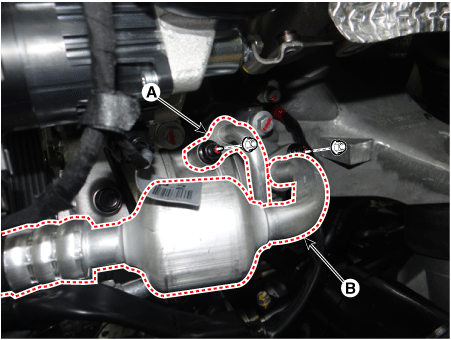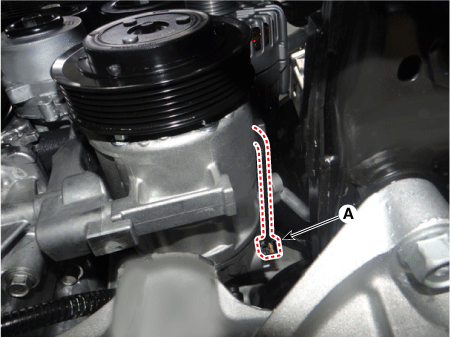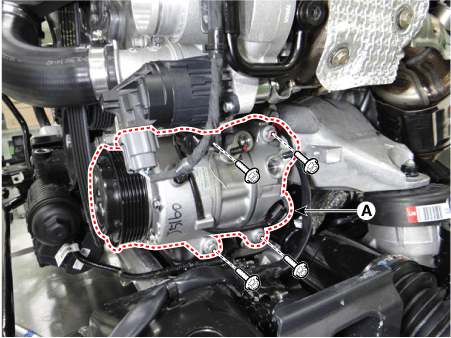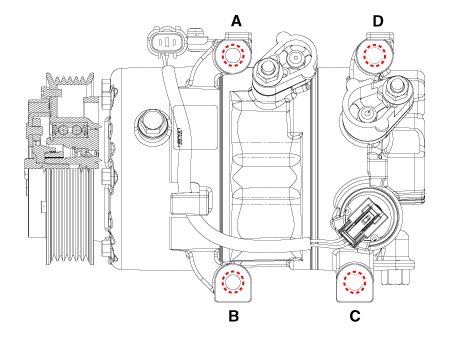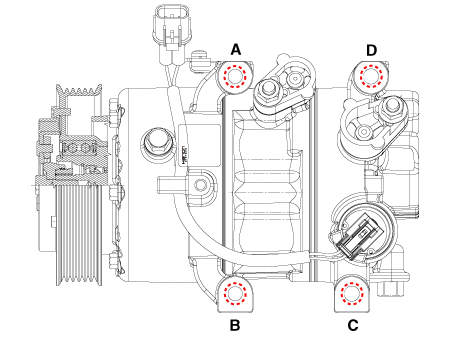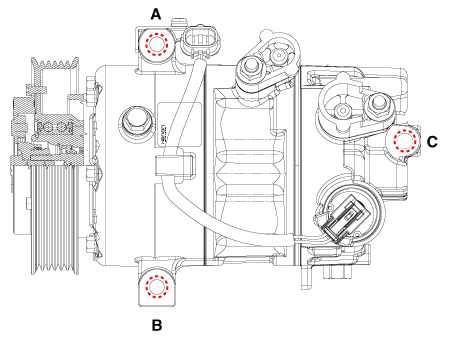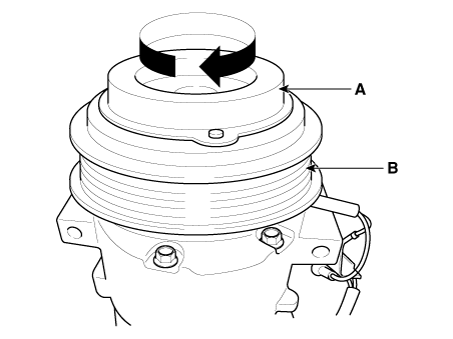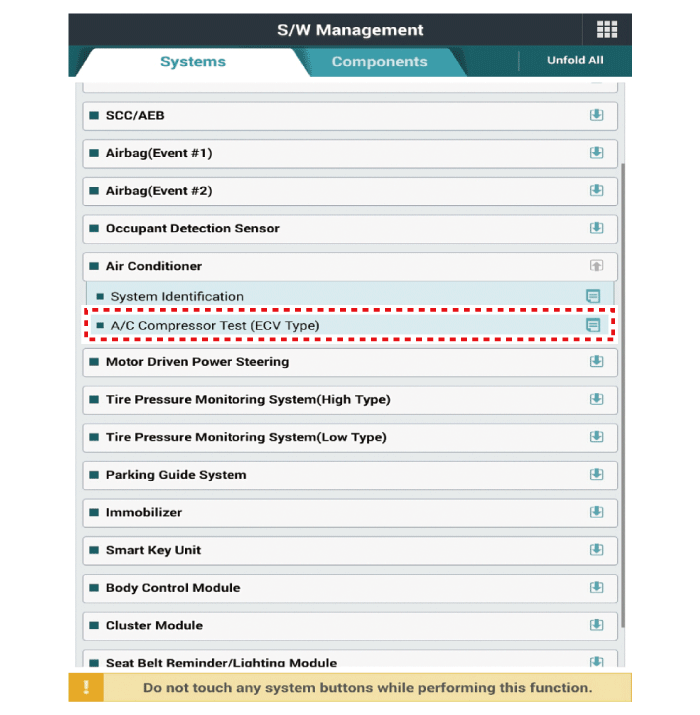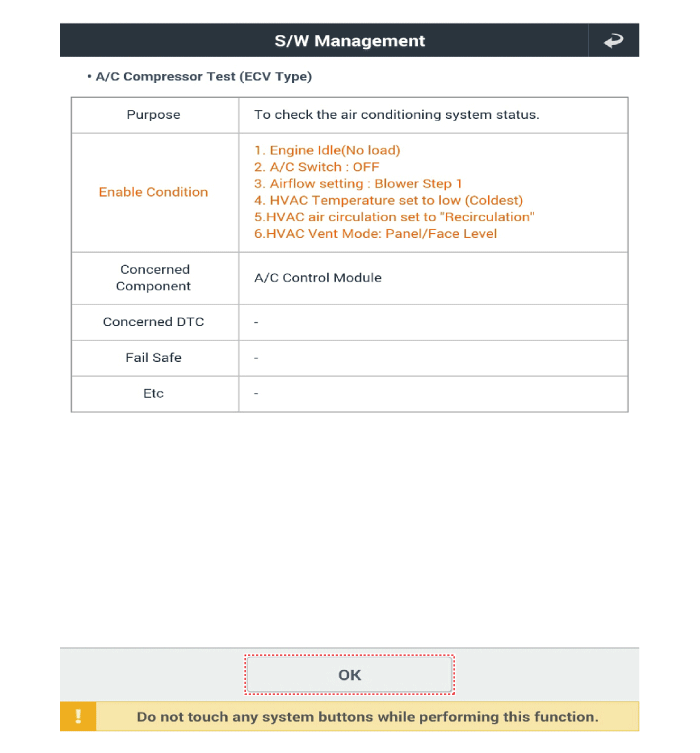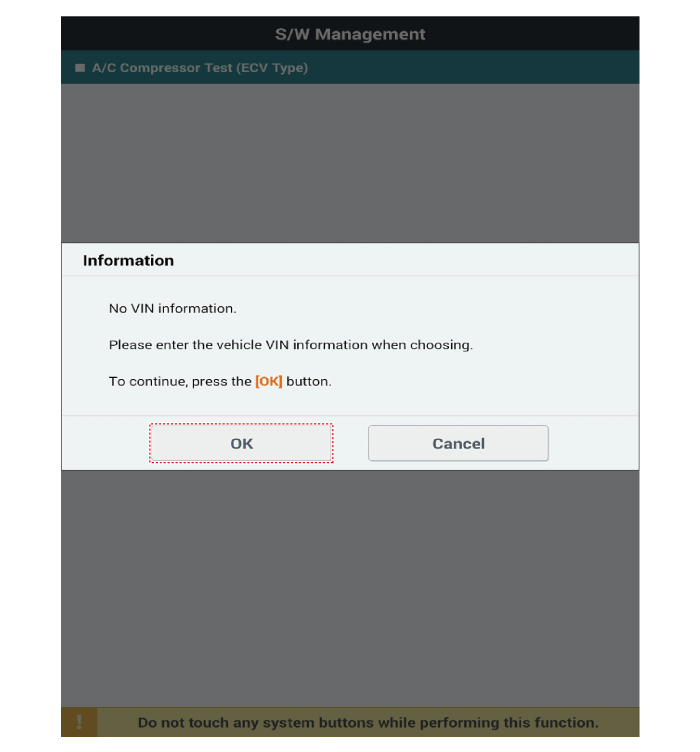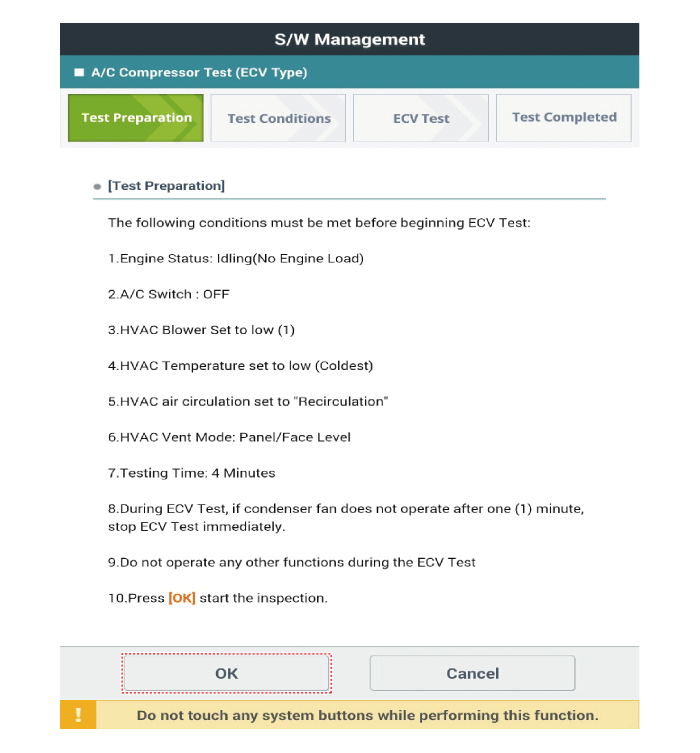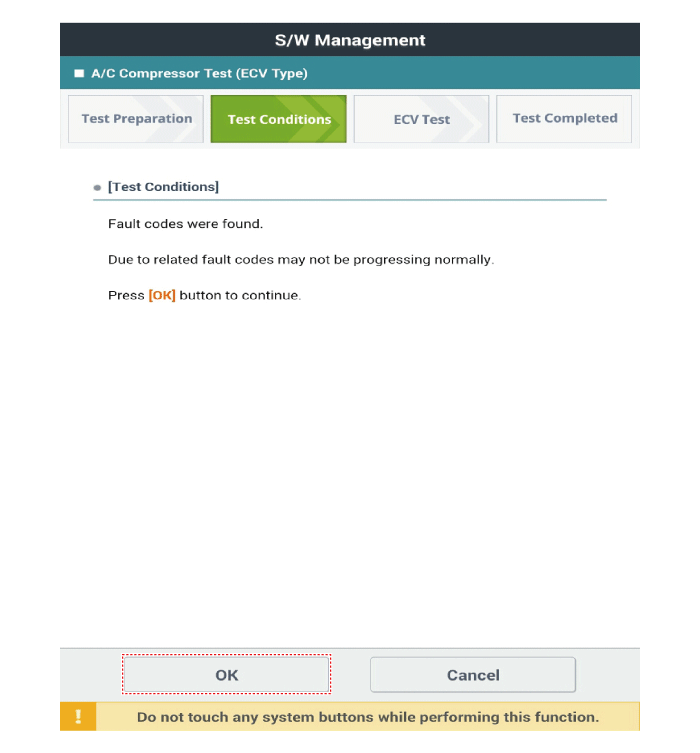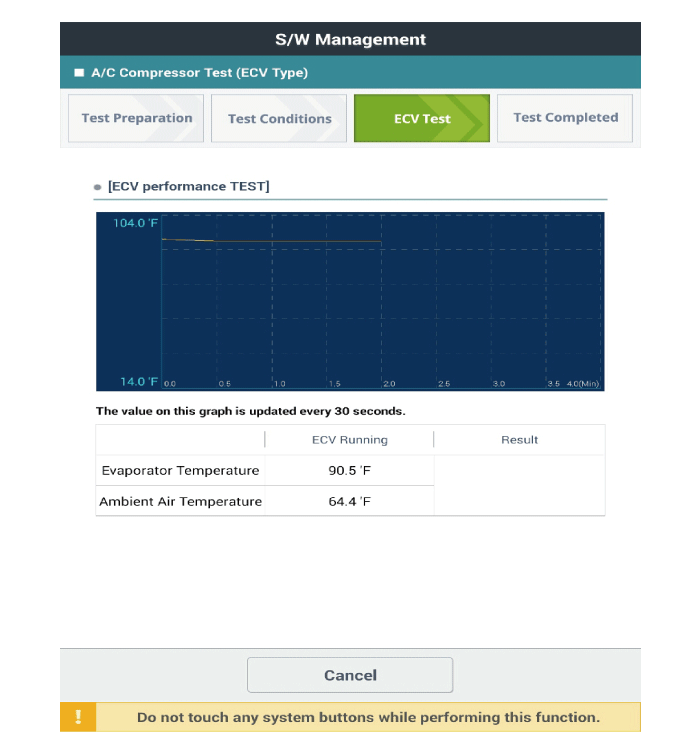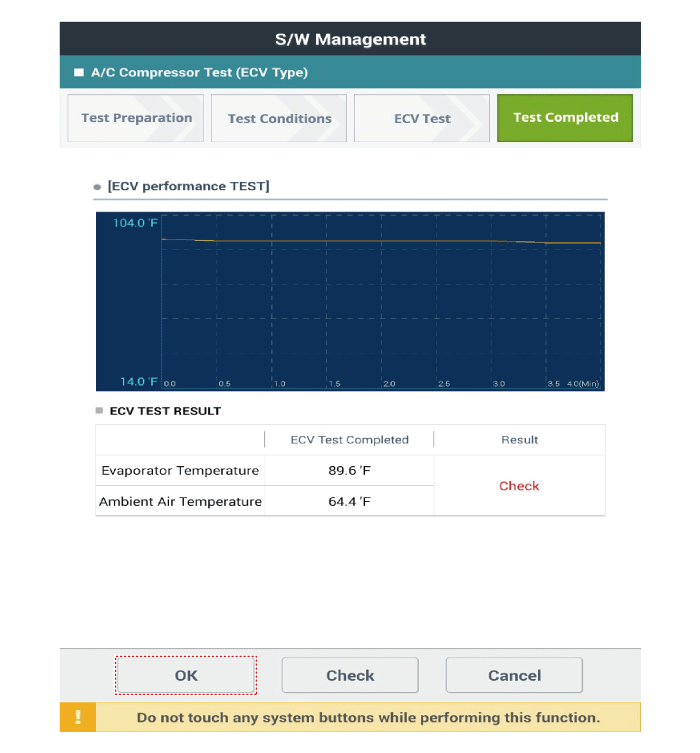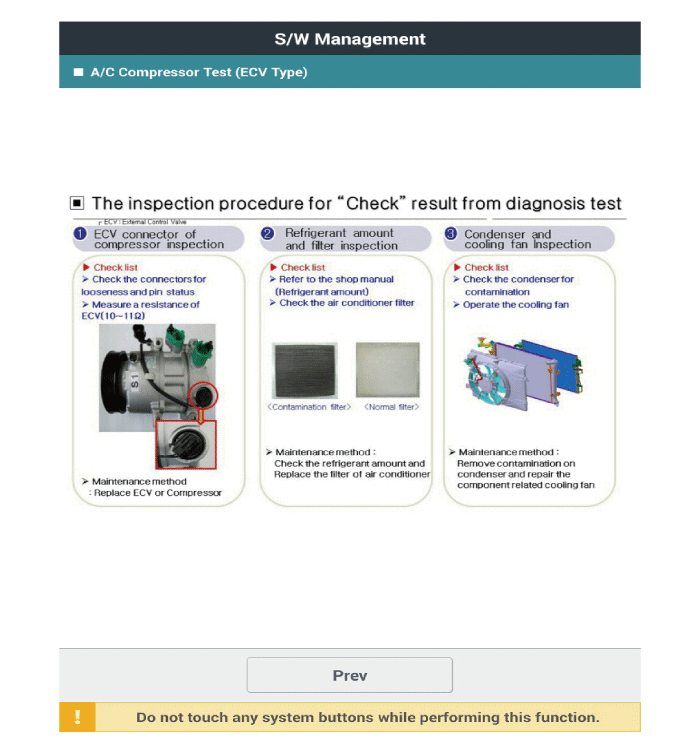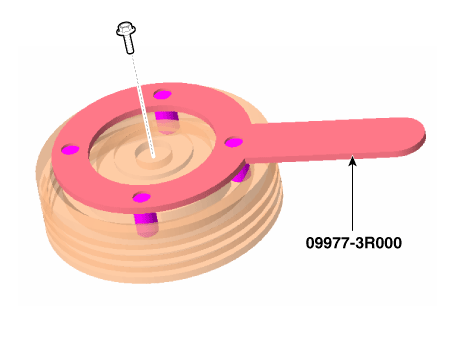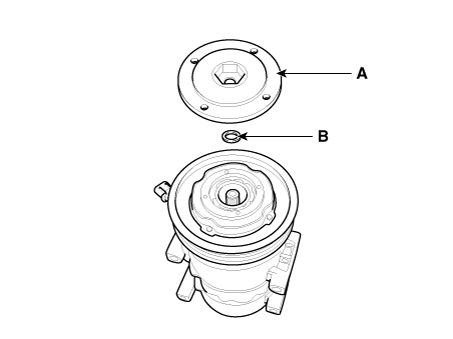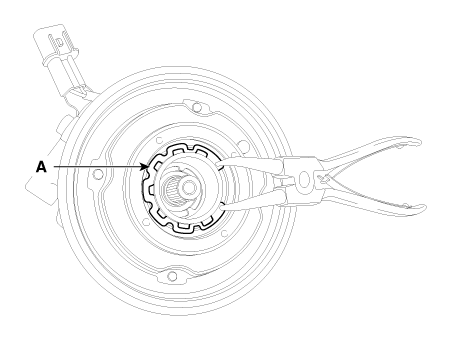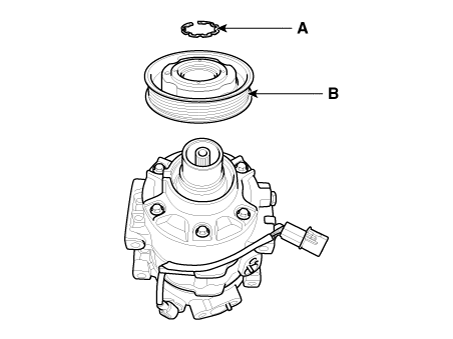Kia Stinger: Air Conditioning System / Compressor
Components and components location
| Component |
| [THETA Engine] |
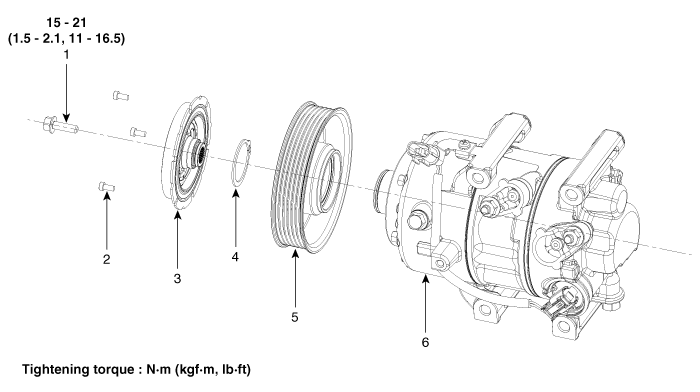
| 1. Clutch Bolt 2. Limiter Bolt 3. Limiter & Hub Assembly |
4. Snap Ring 5. Pulley 6. Compressor Assembly |
| [LAMBDA Engine] |
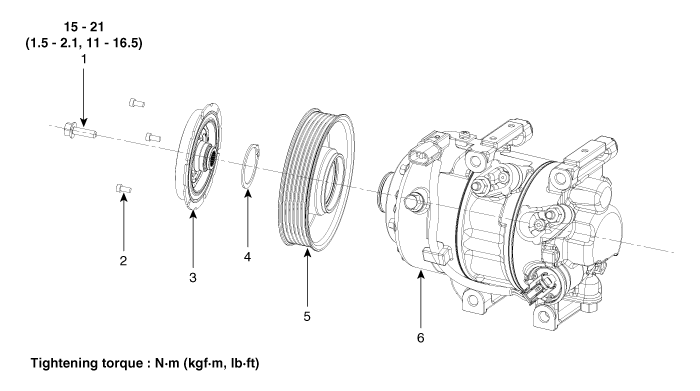
| 1. Clutch Bolt 2. Limiter Bolt 3. Limiter & Hub Assembly |
4. Snap Ring 5. Pulley 6. Compressor Assembly |
| [R Engine] |
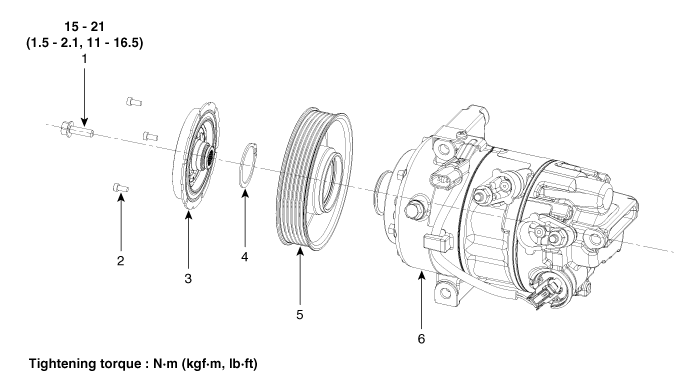
| 1. Clutch Bolt 2. Limiter Bolt 3. Limiter & Hub Assembly |
4. Snap Ring 5. Pulley 6. Compressor Assembly |
Description and operation
| Description |
The compressor is the drive unit of the A/C system.
Located on the side of the engine block, it is driven by the V-belt of the engine.
The compressor changes low pressure and low temperature refrigerant gas into high pressure and high temperature refrigerant gas.
Variable Swash Plate Compressor
The compressor has a rotating swash plate that reciprocates the pistons to compress refrigerant.
The variable swash plate compressor controls the swash plate angle to change the refrigerant displacement. It achieves precise cooling capability control in accordance with vehicle interior and driving conditions.
The internally controlled variable swash plate compressor changes the swash plate angle by the MCV (Mechanical Control Valve) in accordance with fluctuation of a suction pressure.
The externally controlled variable swash plate compressor changes the swash plate angle by the ECV (Electric Control Valve) in accordance with an electrical signal from the heater & A/C control unit.
This enables stable temperature control and improved driving experience.
ECV Control Diagram
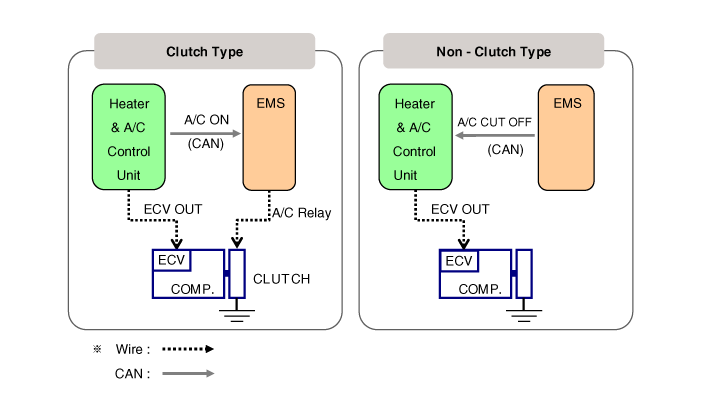
Repair procedures
| Removal |
R Engine
| 1. |
If the compressor is marginally operable, run the engine at idle speed, and let the air conditioning work for a few minutes, then shut the engine off. |
| 2. |
Disconnect the negative (-) battery terminal. |
| 3. |
Recover the refrigerant with a recovery/charging station. |
| 4. |
Loosen the drive belt. D 2.0 R VGT (Refer to Engine Mechanical System - "Drive Belt") G 2.0 T-GDI-THETA (Refer to Engine Mechanical System - "Drive Belt") G 3.3 T-GDI-LAMBDA (Refer to Engine Mechanical System - "Drive Belt") |
| 5. |
Remove the discharge line (A) and suction line (B) from the compressor.
|
| 6. |
Remove the engine room under cover. D 2.0 R VGT (Refer to Engine Mechanical System - "Engine Room Under Cover") G 2.0 T-GDI-THETA (Refer to Engine Mechanical System - "Engine Room Under Cover") G 3.3 T-GDI-LAMBDA (Refer to Engine Mechanical System - "Engine Room Under Cover") |
| 7. |
Disconnect the ECV connector (A).
|
| 8. |
Remove the compressor assembly (A) after loosening the bolts.
|
LAMBDA Engine
| 1. |
If the compressor is marginally operable, run the engine at idle speed, and let the air conditioning work for a few minutes, then shut the engine off. |
| 2. |
Disconnect the negative (-) battery terminal. |
| 3. |
Recover the refrigerant with a recovery/charging station. |
| 4. |
Remove the sub frame. (Refer to Suspension System - "Sub Frame") |
| 5. |
Loosen the drive belt. D 2.0 R VGT (Refer to Engine Mechanical System - "Drive Belt") G 2.0 T-GDI-THETA (Refer to Engine Mechanical System - "Drive Belt") G 3.3 T-GDI-LAMBDA (Refer to Engine Mechanical System - "Drive Belt") |
| 6. |
Remove the discharge line (A) and suction line (B) from the compressor.
|
| 7. |
Disconnect the ECV connector (A).
|
| 8. |
Remove the compressor assembly (A) after loosening the bolts.
|
| Installation |
| 1. |
Make sure that the compressor (A) mounting bolt of the correct length is screwed in. Tighten the mounting bolts in the specified tightening order.
[Lambda Engine]
[THETA Engine]
[R Engine]
|
| 2. |
Install in the reverse order of removal.
|
| Inspection |
| 1. |
Check the plated parts of the limiter & hub assembly (A) for color changes, peeling or other damage. If there is damage, replace the assembly. |
| 2. |
Check the pulley (B) bearing play and drag by rotating the pulley by hand. Replace the pulley with a new one if it is noisy or has excessive play/drag.
|
| External Control Valve Compressor Inspection (KDS) |
Compressor type: Fixed type compressor, External control valve, Internal control valve.
In cases of fixed type and internal control valve, it is possible to inspect compressor's operation with clutch noise.
When it comes to External control valve, however, it cannot be checked in this way bacause it doesn't have a clutch.
So, ECV should be inspected with KDS as below.
| 1. |
Connect KDS to the vehicle and select 'Aircon Compressor Test(ECV type)' [ECV1]
|
| 2. |
Make the vehicle ready as the KDS instruction on the monitor. (Turn off A/C 'switch' only)
|
| 3. |
Check if other DTC codes are found before inspect ECV compressor. If so, solve that problems first. If not, press 'OK' button to continue.
|
| 4. |
Start inspection
|
| 5. |
Check the result of inspection. [ECV7]
[ECV8]
|
| 6. |
If the result shows "Check" , click "Check" and follow the instruction.
|
| 7. |
Inspect ECV again from the first step. |
| Disassembly |
| 1. |
Remove the RH front tire. (Refer to Suspension System - Wheel") |
| 2. |
Remove the front wheel guard [RH]. (Refer to Body - "Front Wheel Guard") |
| 3. |
Loosen the drive belt. D 2.0 R VGT (Refer to Engine Mechanical System - "Drive Belt") G 2.0 T-GDI-THETA (Refer to Engine Mechanical System - "Drive Belt") G 3.3 T-GDI-LAMBDA (Refer to Engine Mechanical System - "Drive Belt") |
| 4. |
Remove the center bolt (A) and the hub bolts (B) while holding the pulley with a disc & hub assembly bolt remover (09977-3R000).
|
| 5. |
Remove the hub assembly (A) and shim (gap washer) (B), taking care not to lose the shim.
|
| 6. |
Remove the pulley (B) after removing the snap ring (A) with snap ring pliers.
|
| 7. |
Reassembly is the reverse order of disassembly.
|
 Refrigerant Line
Refrigerant Line
Repair procedures
Replacement
1.
Discharge refrigerant from the refrigeration system.
2.
Replace faulty tube or hose.
...
 Condenser
Condenser
Components and components location
Components
1. Condenser
Repair procedures
Inspection
1.
Check the condenser fins for clogging ...
Other information:
Kia Stinger CK 2018-2025 Service Manual: Rear Pillar Trim
Components and components location Component Location 1. Rear pillar trim Repair procedures Replacement Put on gloves to protect your hands. ...
Kia Stinger CK 2018-2025 Service Manual: Smart Key
Repair procedures Smart Key Smart Key Code Saving 1. Connect the DLC cable of KDS to the data link connector (16 pins) in driver side crash pad lower panel, turn the power on KDS. 2. Select the vehicle model and then do "Smart ...

